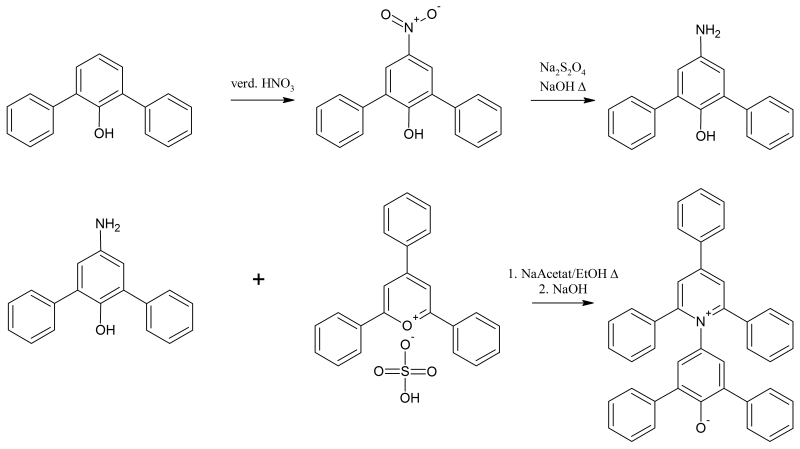 | |
| Names | |
|---|---|
| Preferred IUPAC name 25-(2,4,6-Triphenylpyridin-1-ium-1-yl)[11,21:23,31-terphenyl]-22-olate | |
| Identifiers | |
3D model (JSmol) | |
| ChemSpider | |
PubChem CID | |
| UNII | |
CompTox Dashboard (EPA) | |
| |
| |
| Properties | |
| C41H29NO | |
| Molar mass | 551.689 g·mol−1 |
Except where otherwise noted, data are given for materials in their standard state (at 25 °C [77 °F], 100 kPa). | |
Reichardt's dye (Betaine 30) is an organic dye belonging to the class of azomerocyanine betaines. This dye is notable for its solvatochromic properties, meaning it changes color depending on the solvent in which it is dissolved. It has one of the largest solvatochromic effects ever observed, [1] with color varying across the entire visible spectrum. As a result, it gives striking visual results for chemical demonstrations. [2]

This chemical is named for Christian Reichardt , who developed it when working as a doctoral student in the lab of Karl Dimroth . It is thus also sometimes called Dimroth–Reichardt dye. The names also sometimes refer to some close chemical analogs, in particular, the one having para substituted tert-butyl groups on the phenyl rings. [3]
